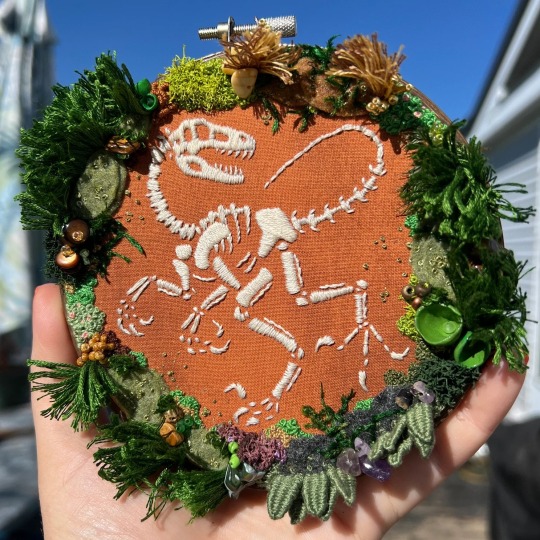Carolina • 32 • Argentina 🇦🇷 • Muestro mis bordados :) @caruwa en instagram
Don't wanna be here? Send us removal request.
Text



🧵🦋🌿Rothschildia Lebeau, 25cm🌿🦋🧵 • caruwa
#embroidery#handembroidery#needlecraft#needlework#bordadoamano#handcrafted#moths#mothart#bordado#bug art#natureembroidery#natureart#nature artist#moth art#moth#lepidoptera#saturniidae
34 notes
·
View notes
Text

Cuartel Centenario de Bomberos, Montevideo (20cm) • caruwa
#embroidery#handembroidery#needlecraft#needlework#bordadoamano#handcrafted#bordado#montevideo#uruguay#architecture#architectural embroidery
15 notes
·
View notes
Text

Giant peacock moth (20cm hoop) WIP
www.instagram.com/caruwa
#embroidery#handembroidery#needlecraft#needlework#bordadoamano#handcrafted#moths#mothart#bug art#bordado#saturniidae#lepidoptera#lepidopterology#cottagecore#natureart#nature artist
13 notes
·
View notes
Text

MAYHEM handembroidered patch

www.instagram.com/caruwa
#ladygaga#embroidery#handembroidery#needlecraft#needlework#bordadoamano#handcrafted#lady gaga#crafty things#craft#sewblr#mayhem#little monsters
16 notes
·
View notes
Text

Count Von Roo handembroidered brooch
Caruwa
#embroidery#handembroidery#needlecraft#needlework#bordadoamano#handcrafted#bordado#brooch#broderie#count von roo#neopets#countvonroo#blomaroo#fanart#crafs#sewing#sewblr#neoart
53 notes
·
View notes
Text

Count Von Roo WIP
www.instagram.com/caruwa
#neopets#count von roo#embroidery#handembroidery#bordadolivre#bordadoamano#bordadoamao#needlecraft#neopet#fanart#crafts#handcrafted
69 notes
·
View notes
Text




🌿🦋Columbia silkmoth🦋🌿 Hyalophora Columbia
handembroidery, 20cm
www.instagram.com/caruwa
#embroidery#handembroidery#needlecraft#needlework#bordadoamano#moth art#mothart#mothembroidery#natureart#moths#bug art#cottagestyle#saturniidae#lepidoptera#silkmoth#bugs#butterfly#nature artist#insects#insectart#insect art#crafts#needlepainting#Hyalophora#diy patches#forest cottage#cottagecore#cottage aesthetic#artists on tumblr#sewblr
31 notes
·
View notes
Text




🌿🦋Columbia silkmoth🦋🌿 Hyalophora Columbia
handembroidery, 20cm
www.instagram.com/caruwa
#embroidery#handembroidery#needlecraft#needlework#bordadoamano#moth art#mothart#mothembroidery#natureart#bug art#moths#cottagestyle#saturniidae#lepidoptera#silkmoth
31 notes
·
View notes
Text

🌿Eupackardia Calleta 🌿 Calleta Silkmoth, 20cm
https://www.instagram.com/caruwa
#embroidery#handembroidery#needlecraft#needlework#bordadoamano#embroideryart#handmade#handcrafted#handmadeembroidery#moths#silkmoth#saturniidae#bug art#bugs#natureembroidery#natureart#nature#insects#insectart#fiber art#fiber crafts#crafts#crafty things
352 notes
·
View notes
Text


🌿Caladium handembroidery (2020)
https://instagram.com/caruwa
#embroidery#handembroidery#needlecraft#needlework#bordadoamano#embroideryart#handmade#handcrafted#handmadeembroidery#natureembroidery#natureart#nature#botanicart#botanical#botanic illustration#plants#craft#crafts#crafty things#threadart#threadpainting#caladium
97 notes
·
View notes
Text

🌿Abraxas Grossulariata (Magpie moth) [Available]
🧵5" // 12cm hoop, eco-dyed fabric
💌 Commissions open
https://instagram.com/caruwa
#embroidery#handembroidery#needlecraft#needlework#bordadoamano#moths#handmade#bug art#mothart#moth art#handcrafted#embroideryart#handmadeembroidery#cottagecore#natureart#natureembroidery#magpie moth#crafts#craft
103 notes
·
View notes
Text



ABACAB - Genesis patch (2020)
https://www.instagram.com/caruwa
#genesis#genesistheband#abacab#embroidery#handembroidery#philcollins#phil collins#tony banks#mike rutherford#handmade#needlework#diy craft#diy#diy patches#needlecraft
19 notes
·
View notes
Text

🌿Attacus Atlas🌿
🧵Atlas moth embroidery, 36 cm (14")
💖Ig @caruwa
Commissions open!
https://instagram.com/caruwa
#embroidery#handembroidery#moths#moth#saturniidae#silk moth#silkmoth#atlas moth#atlas#cottagcore#cottagestyle#needlework#needlecraft#bordadoamano#crafts#embroideryart#handmade#handcrafted#handmadeembroidery#bugs#natureart#nature art#insectart#insects
87 notes
·
View notes
Text

Silkmoth embroidery 🍁 Commissions open!
Ig: @caruwa
https://instagram.com/caruwa
#cecropia moth#embroidery#handembroidery#needlecraft#moth art#bordadoamano#crafts#needlework#cottagcore#cottagestyle#natureembroidery#natureart#bugs#silk moth#saturniidae#moth#moths#embroideryart#handmade#handcrafted#handmadeembroidery
14 notes
·
View notes
Text
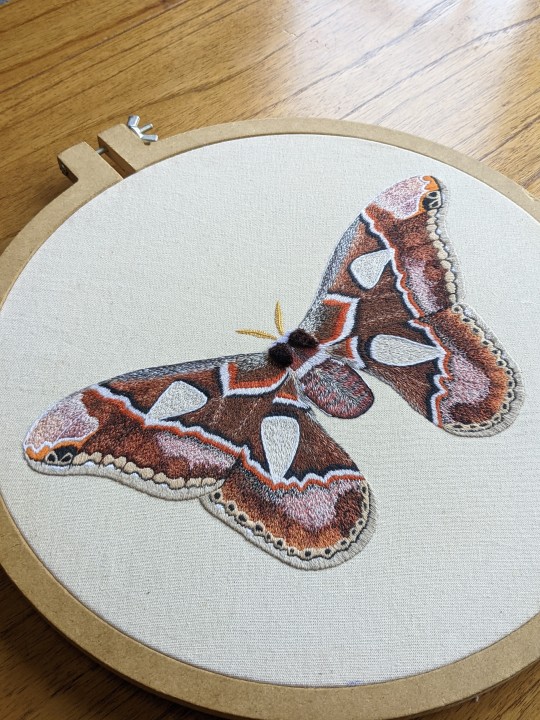
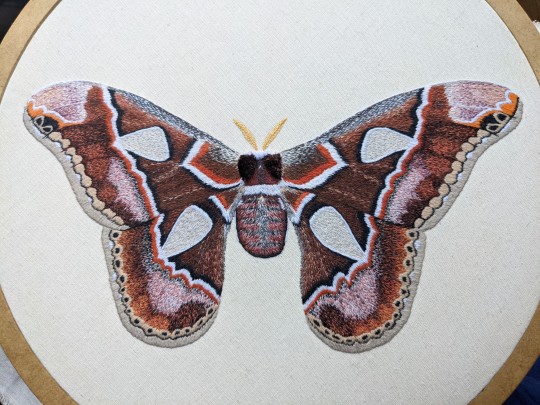
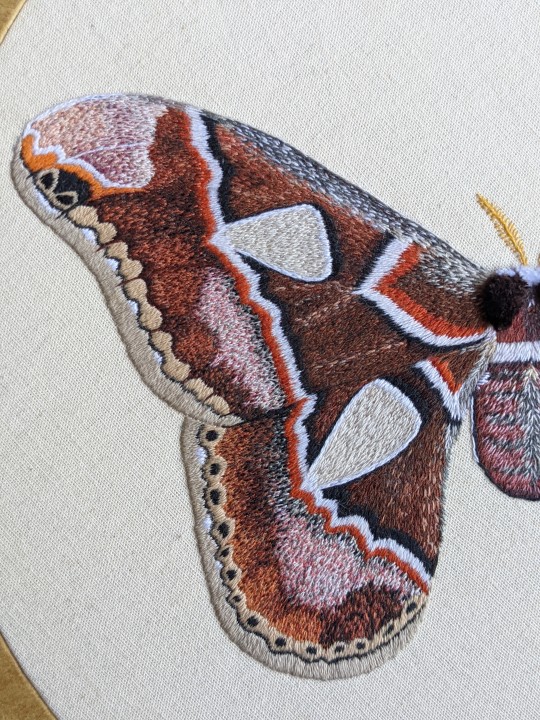
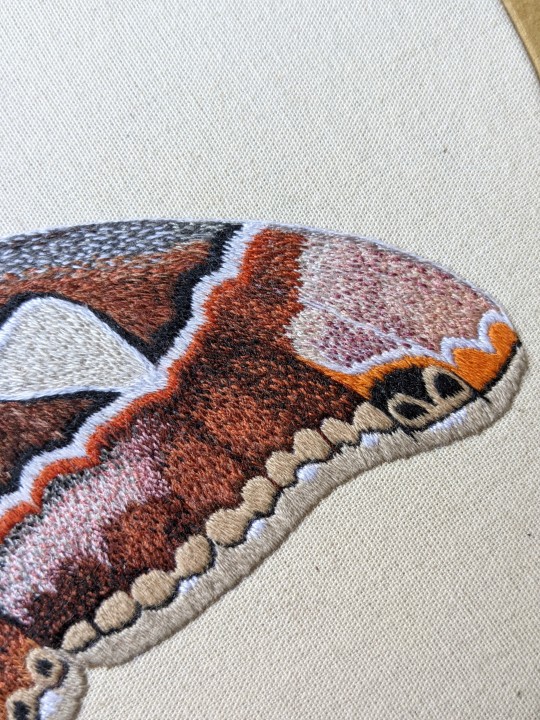
Rothschildia Lebeau (female), 25 cm // 10"
Caruwa 🌿
Follow me on instagram! @caruwa
https://instagram.com/caruwa
#embroidery#handembroidery#needlecraft#needlework#bordadoamano#lepidoptera#saturniidae#mothart#bug art#moth#moths#natureart#natureembroidery
52 notes
·
View notes
Text

Atlas moth handembroidery, 36 cm (14")
https://www.instagram.com/caruwa
#embroidery#handembroidery#needlecraft#needlework#bordadoamano#mothart#moths#bug art#cottagecore#cottagestyle#lepidoptera#saturniidae
15 notes
·
View notes
